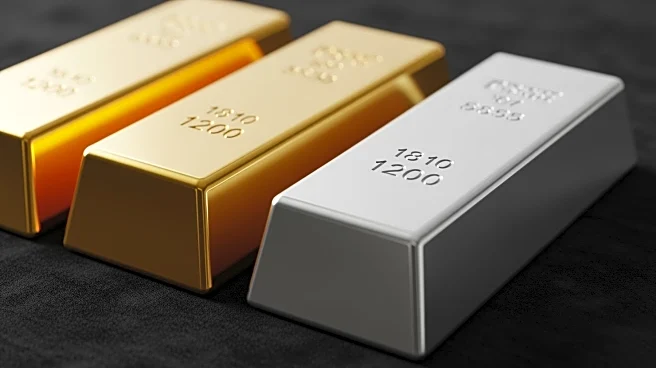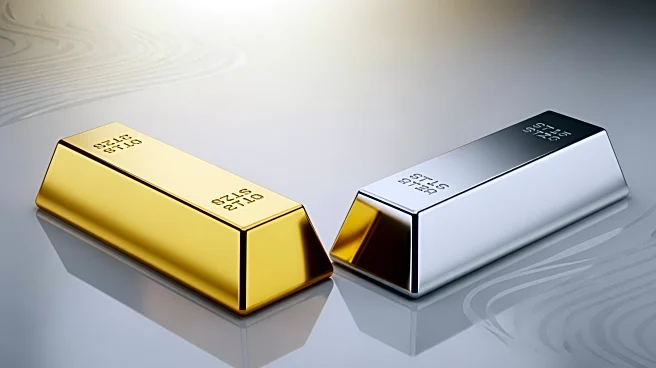What's Happening?
Silver prices have reached an all-time high in October 2025, surpassing $50 per troy ounce, a level previously seen in 1980 and 2011. The price peaked at $54.41 per troy ounce, driven by a 90% increase
since April. Historical comparisons to previous silver highs in 1980 and 2011 raise questions about potential market corrections. The 1980 high was influenced by the Hunt brothers' speculation, while the 2011 high saw rapid declines due to price manipulation. Current market conditions differ, with less overheated sentiment and no detected manipulation, suggesting a stable outlook for silver prices.
Why It's Important?
The rise in silver prices reflects broader economic trends and investor behavior, with implications for industries reliant on silver, such as electronics and manufacturing. The historical context of silver price fluctuations highlights the potential for market volatility and the importance of monitoring economic indicators. Investors may view silver as a hedge against inflation and economic uncertainty, influencing investment strategies and market dynamics. The comparison to past market conditions provides insights into potential future trends and risks.
What's Next?
Silver prices may continue to rise, supported by strong demand and favorable economic conditions. Investors and market analysts will closely monitor price movements and sentiment indicators to assess the potential for future corrections. The role of central banks and monetary policy in influencing silver prices will be crucial in shaping market trends. As silver remains a valuable asset, industries reliant on the metal may need to adapt to changing price dynamics.
Beyond the Headlines
The silver market's historical context underscores the importance of understanding market manipulation and its impact on prices. The role of speculative behavior and regulatory measures in shaping market trends highlights the need for transparency and oversight. The environmental and ethical considerations of silver mining and production may also become more prominent in discussions about the metal's future.











